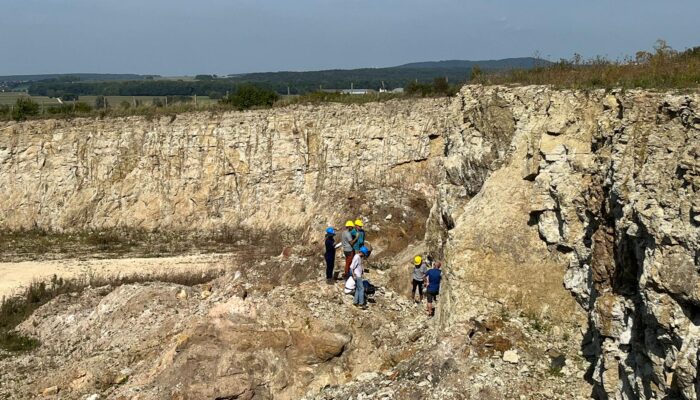
One of the best-researched and preserved impact craters on Earth is the Ries Crater (Germany). Hikers, bikers, school groups, and geo-tourists from all over the world come here in search for the evidence of the cosmic catastrophe. In this week’s blog post, PhD student Katherine Villavicencio from University G. d’Annunzio (Italy) shares her experience when attending the Summer School “Impacts and their role in the evolution of life” held in the city of Nördlingen in September 2023.
When I look back now, that summer seemed to last forever…
By mid of September 2023, it was warm enough to prevent melting but not so cold as to cause freezing. Germany’s unpredictable meteorological conditions allowed for enjoying warm mornings and afternoons and feel rejuvenated by cool evening breezes. The cosy and colourful city of Nördlingen in Bavaria welcomed us to one of the most completed and excited summer schools in 2023: “Impacts and their role in the evolution of life”, co-organized by The European Astrobiology Institute (EAI), the Stockholm University Astrobiology Centre, the Ries Crater Museum and the University of Neu-Ulm. This school covered interesting lectures such as geology, petrography, space missions, and astronomy; field trips to the Nördlingen Ries crater and the Steinheim Basin impact structure; and visits to the Ries Crater museum.
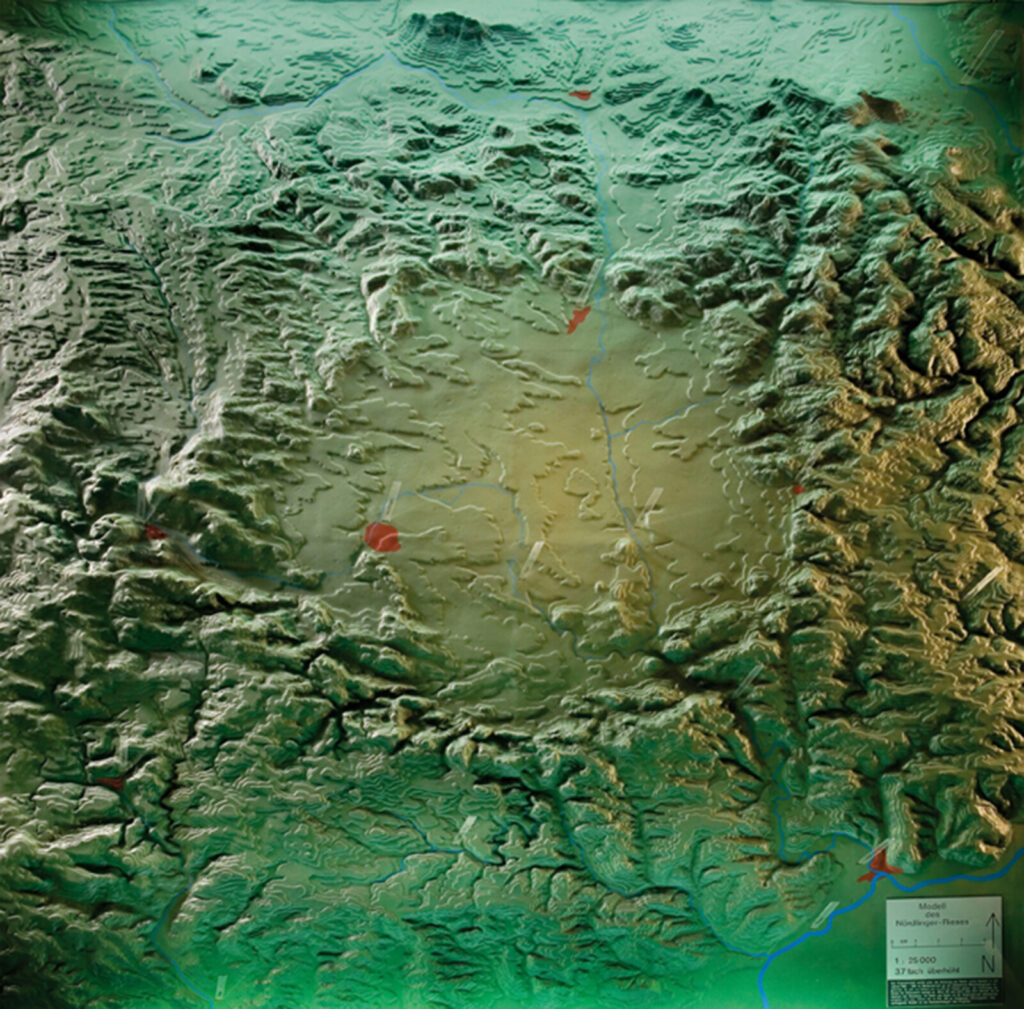
Figure 1: Portrait of the Modelling Impact Crater around Nördlingen Ries. Credit: Ries Crater Museum.
Attendees included researchers at different career stages: from Master and PhD students, to postdoctoral researchers and more senior scientists. Working groups were formed by people with different backgrounds such as geologists, astronomers, biomolecular researchers, chemists, and planetary scientists whose knowledge contributed to the diversity of topics taught during the school.
Prof. Wolf Geppert from the Stockholm University in Sweden was in charge of the organization and coordination of activities during the school. The lectures were centered in general topics such as geology for non-geologists and astronomy for non-astronomers, in order to understand the influence of impact crater in the formation of the Solar System. These lectures were complemented by excursions to the Nördlingen and the Steinheim Craters, practical exercises, and demonstrations of Petrographic slides of impactites, and Palynology as a biostratigraphy tool. Those lectures were taught by an excellent and an inspirational group of professors and research experts.
What about the Geodynamic of the impact cratering?…
A cosmic disaster struck on a day approximately 14.5 million years ago, registering the beginning of Ries crater history. The celestial body raced toward the Earth: the area that would eventually become the Ries Crater was drastically altered in an instant by the asteroid’s impact. A large radius around the impact area was covered in ejected rock debris. A large portion of Central Europe was hit by shock waves, which created an intense heat wave that burned through forests and any remaining vegetation. Within a considerable radius of the crater, all life was wiped out. After the cloud of vaporized and molten rock collapsed, all that remained of today’s Ries was a massive dead debris field.
The compressed and heated air between the extraterrestrial body and the impact site forced material from the Earth’s surface and the asteroid to melt and blast high into the atmosphere even before the impact. Some molten rock crystallized into glass while still in flight; these objects, known as tektites, have been discovered in Bohemia, Moravia, and Lusatia up to 450 kilometers apart. Moldavites are the name given to the tektites formed by the impact of Ries. Video 1 shows an animation of the crater’s geodynamic that could have taken place on Ries.
Video 1. Dynamic sequence of the impact crater at the Ries region. Image 1 shows the 10 milliseconds after impact. Then, image 2 displays the starting of crater formation after 60 milliseconds. Followed by the formation of deep transient crater after about 10 seconds in image 3. After image 4 shows the collapse of transient crater and deposit of ejected rock masses after 1 minute. Finally, the end of crater formation and deposit of Suevite after 10 minutes is displayed in figure 5. Credits: Geopark Ries – Windows into the Earth.
Unfathomably high energy emerges when the asteroid strikes the Earth; this energy is comparable to the explosive power of several gigatons of TNT or hundreds of thousands of Hiroshima-sized atomic bombs fired simultaneously. On Earth, the explosion’s apparent brightness far exceeds that of the sun. The space bullet enters the Earth’s crust at a depth of about 1000 meters even in the initial stages. The hellfire heat is driven outward by a powerful shock wave. The shock wave circles the entire planet at the speed of sound. With a wind speed of Beaufort force six (39–49 km/h), it is detectable even at 500 kilometers away. The shock wave travelled 20,000 km to reach the other side of the Earth after 17 seconds (video-figure 1).
With a diameter of 12 km and a depth of roughly 4.5 km , the impact created a transient crater. Rock masses from different layers were thrown out of the crater or slide inward from the crater rim in the form of large blocks. A substantial layer of Bunte Trümmermassen (rock debris) up-to-100-m deep covered the surrounding area within a radius of up to 50 km (video-figure 2). Rock of different stratigraphic layers were broken up and pulverized as the impact-vaporized crystalline basement rock rises in an eruption column up to 100 km into the atmosphere. Huge rock fragments fracture off and fell into the center of the steep crater walls. It grew to a diameter of about 25 km very quickly (video-figure 3). The impact-compressed crystalline basement rebounded to create an inner ring and a central uplift. When combined with the sliding blocks, the crater floor was elevated to approximately 500 meters below the surface (video-figure 4).
The brilliant cloud exploded minutes after the impact and covered the devastated terrain with an ejected blanket made of rock, debris, and other materials. The resulting rock, known as Suevite, filled the crater in a 300-m-thick layer (video-figure 5). All life was totally eradicated by the asteroid within about 100 km of the impact site. A large lake formed in the northeast of the Ries Crater, and the courses of the ancient rivers Main, Altmühl, and Wörnitz were dammed. These changes had a substantial impact on the water network of the Ries landscape at that time.
Me and some guys had a hammer so we tried real hard geological exploration…
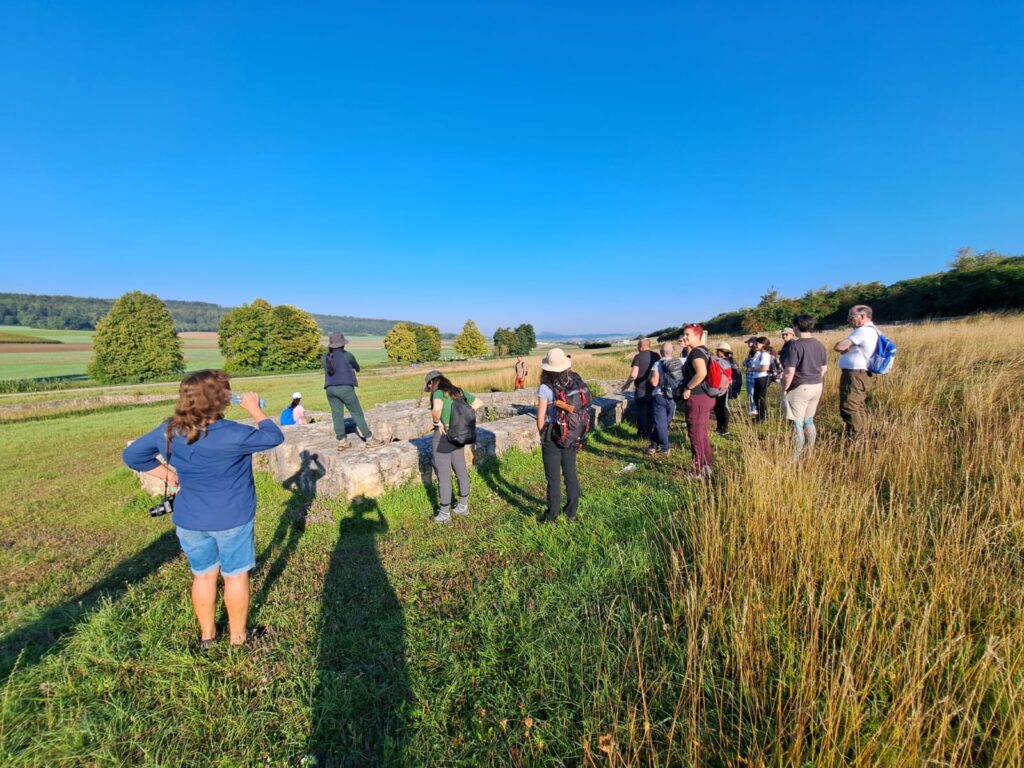
Figure 2: Some attenders observing the landscape around Ries Crater for the first day of excursion. Credits: Attendees of the summer school.
After having studied one full week of introductory lectures such as the geological evidence and characterization of impactites and impact structures held by the inspirational Dr. Ludovic Ferrière from the Natural History Museum Abu Dhabi – United Arab Emirates, who taught us about the amazing micro-world of the minerals derived from impact craters, as well as the modelling of impact craters physics in charge of Prof. Kai Wünnemann from the Museum für Naturkunde Leibniz-Institut für Evolutions- und Biodiversitätsforschung, the amazing discussion of impacts and the formation of the Solar System by Dr. Alexis Brandeker from the Stockholm Observatory.
We also learned about the importance of comets and meteorites taught by the both motivating Dr. Martin Hilchenbach from the Max Planck Institute for Solar System Research and Dr. Lidia Pitarrello from the Natural History Museum Vienna. It was also important to learn about the ecological consequences of impacts by Dr. Vivi Vajda from the Swedish Museum of Natural History. Of course it was remarkable to study the impacts and mass extinctions by Dr. Antoine Bercovici from CNRS, and dynamics and enthusiastic lectures of the very inspirational and devoted to her profession Dr. Anna Losiak who taught us about how to understand the geology for non-geologists, the diverse methods of dating impact craters, and who was in charge of guiding the field trips to the interest zone. Dr. Elmar Buchner from the University of Applied Science Neu-Ulm, Germany, also guided the visit tour to the Ries Crater and the Steinheim Crater.
It was very early in the morning when we realized that a full weekend of geologic field work was ahead of us. Interestingly, not all attendees had the experience in collecting samples, recognizing formations, minerals, and structures from an outcrop. Nonetheless, the professors did their best in explaining in a simple way which were the relevant parameters that should be taken into account for searching evidence of impact craters: the primordial minerals that can be easily recognize into a rock sample, the geomorphology that gives hints about a rock deformation provoked by the crater impact, and how it would have looked like some million years ago. Everybody was excited about the excursions and experiencing the feeling of doing field work as a geoscientist. Even the use of helmets was mandatory to avoid dangers during the excursion … a real geologic exploration experience!!!
Interesting facts about the Suevite rocks…
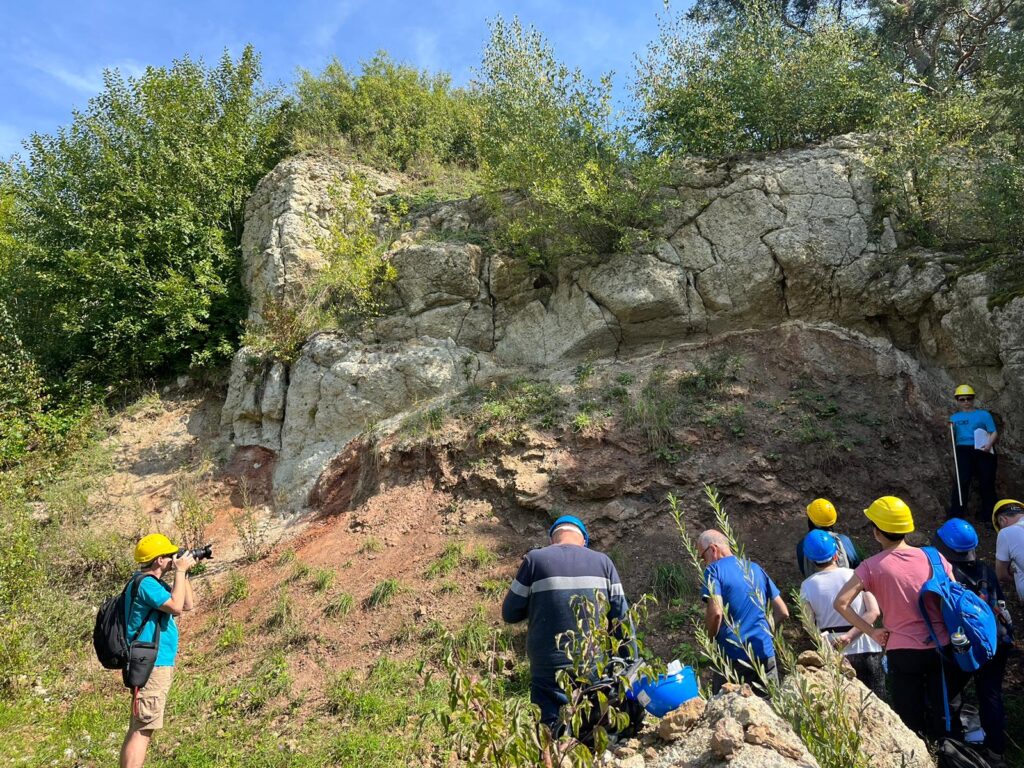
Figure 3: Observation of Suevite rock at the upper part of the outcrop surrounded by the Bunte Breccia in red colouration. Credit: Attendees of the school.
The consequences of the impact were still felt millions of years after the event. Since Roman times, and particularly during the Middle Ages, suevite has been incorporated into the Ries architecture. including the City Hall, Baldinger Tor (Gate), and St. George’s Church in Nördlingen.
A planetary moon landing in the Ries…
The planned landing site for the 1971 Moon mission Apollo 14, was the meteorite crater Fra Mauro. The plan was to familiarize the astronauts appointed for the mission with the geological features of the Moon by training them in the Ries Crater, which acted a kind of geological model for the Moon’s impact crater. The first time the astronauts set foot on the Ries crater basin floor was in August 1970. Geologists from NASA and the University of Tübingen acquainted the Apollo 14 crew with the unique characteristics of the comparable Ries geology so they can identify and examine typical impact affected rock and tectonic features on site. Space travellers got used to the pleasant and densely populated Ries Crater, which is not exactly a lunar landscape.
The Ries Crater is exceptionally well-preserved and regarded as one of the most thoroughly studied craters on Earth in comparison to most other terrestrial impact craters. Additionally, the Apollo-14 mission verified that the Fra Mauro Crater’s debris fields’ geological structures are largely consistent with those of the Ries Crater. Moreover, there is a striking resemblance between the impact rock found in lunar craters and the terrestrial rock known as Suevite. NASA proceeded with its research in the Ries, conducting exploratory drillings to further analyse the rock layers. Furthermore, the Ries have recently piqued the curiosity of Mars researchers. The Ries is still a training location for planetary landings.
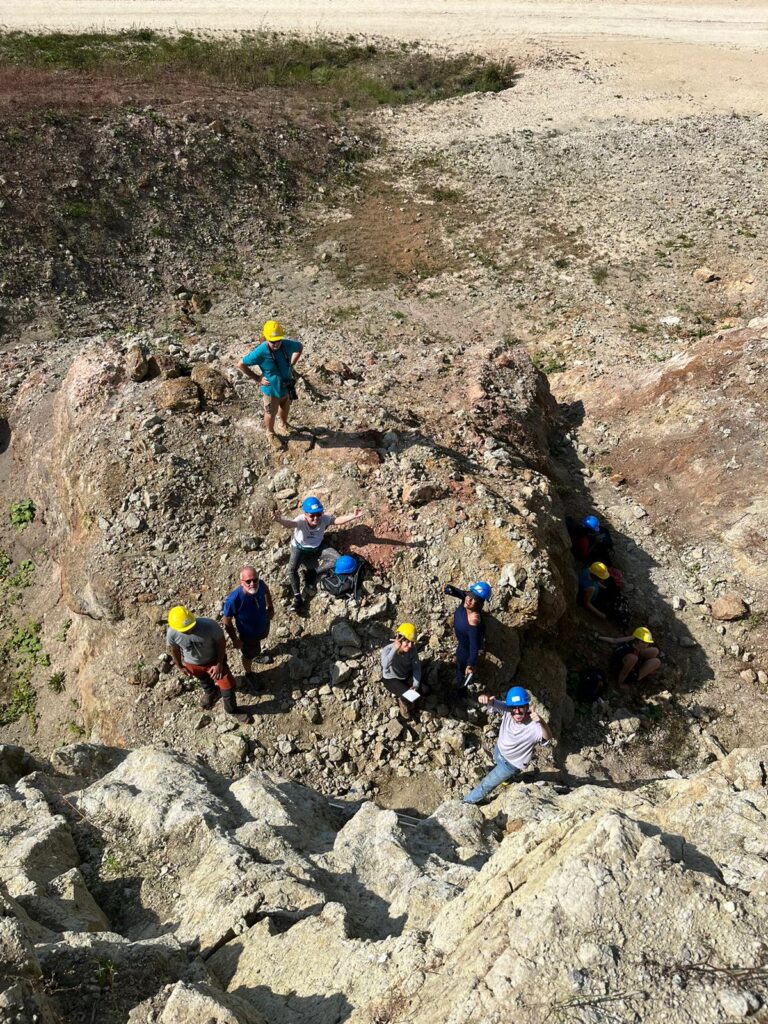
Figure 4. Analysing the Suevite rock formations and taking some samples from there along the Ries Crater. It might resemble like a moon landing site! Credit: Attendees of the school.
We were killin’ time, we were young and restless, we needed to unwind… we guess nothing can last forever…!
Not everybody was prepared to resist three full days of geologic exploration, but we rocked it! The last days of the summer school were dedicated to the practical exercises about the observation of petrographic slides of impactites to identify melt material, minerals derivate from meteorites, and recognition of different basements of rocks (figure 5). It was also possible to observe palynology vestiges and made some exercises about how to detect species and how to use them as a biostratigraphical tool. The lectures concluded with noteworthy topics such as impact hydrothermal vents, impacts and life, and highlights from the Perseverance Mission held by Dr. Alexandra Pontefravt from the Johns Hopkins University, USA.
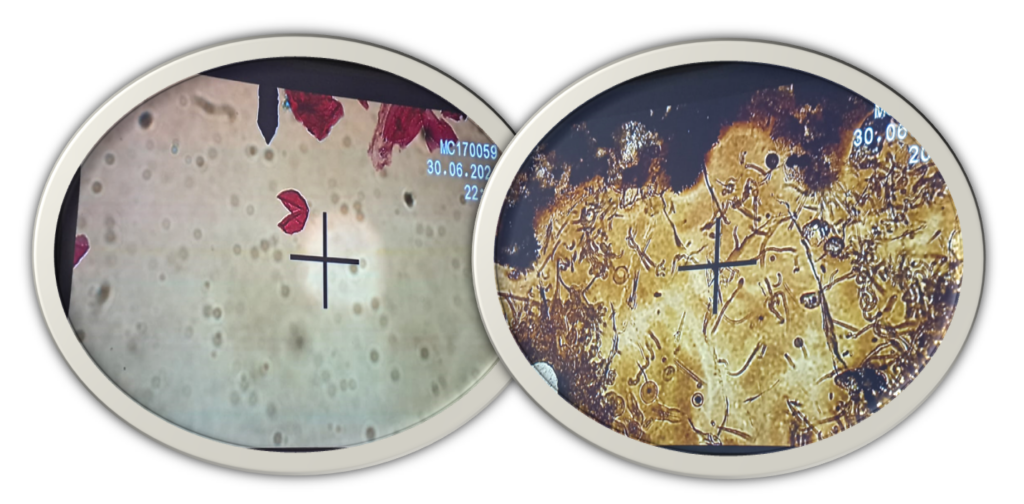
Figure 5: Palynological species in cherry (left) and melted material (right) observed through a microscope. Samples corresponds to environments that resemble impact cratering origin. Credit: Attendees of the school.
Undoubotably this experience was worthly. I would highly recommend to early career researchers to attend this kind of Summer School. The knowledge adquired from excellent proffesors enriched my passion to explore phenomena on Earth that might be present in other rocky bodies of the Solar System. It was remarkable the perfect organization of the school in charge of Prof. Wolf Geppert, who is usually involved in many schools oriented to Astrobiology, Space Missions, Exploration of Sites on Earth. The attendees were so grateful after having learned and shared a good time among each others. As the song says: those were the best days of our life, it was the summer, summer, summer of ’23…!
References
- Dieter Stöffler, Natalia A. Artemieva, Kai Wünnemann, W. Uwe Reimold, Juliane Jacob, Birgit K. Hansen, Iona A. T. Summerson. Ries crater and suevite revisited—Observations and modeling Part I: Observations (2013). Vol 48, 515-589
- Horton E. Newsom, Günther Graup, Terry Sewards, Klaus Keil. Fluidization and hydrothermal alteration of the Suevite deposit at the Ries Crater, West Germany, and implications for Mars (1986). Vol 91, E239-E251
- Wolf von Engelhardt, Günther Graup. Suevite of the Ries crater, Germany: Source rocks and implications for cratering mechanics (1984). Vol 73, 447–481
- Geopark Ries – Europe’s Giant Meteorite Crater. Windows into the Earth. www.geopark-ries.de
Website of the Summer School
- Summer School: Impacts and their Role in the Evolution of Life: https://europeanastrobiology.eu/summer-school-2023-homepage/


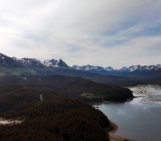
Wolf Dietrich Geppert
Many thanks to Katherine Villavicencio for this C very nice and detailed blog. Of course, the European Astrobiology Institute will organise a number of interesting events in 2024.
Just check the website: http://www.europeanastrobiology.eu
There will e even a conference on impacts and their role in the evolution of life in Nördlingen from 4th to 6th September 2024! The website will be soon coming up!
All the best,
Wolf